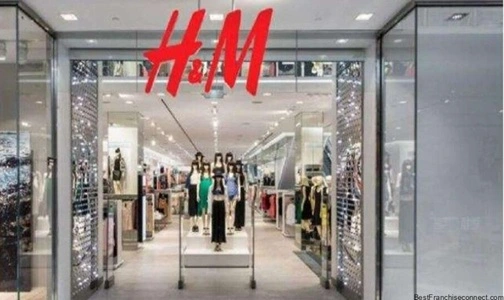The Indian fashion retail market is experiencing remarkable growth, driven by rising disposable incomes, urbanization, and an increasingly fashion-conscious youth. Among the global fashion brands that have gained significant popularity in India is H&M (Hennes & Mauritz), known for its trendy apparel, affordable pricing, and commitment to sustainability. Since its entry into the Indian market, H&M has expanded rapidly, becoming a go-to destination for fashion enthusiasts.
For entrepreneurs interested in tapping into India’s booming fashion retail sector, the prospect of owning an H&M franchise is highly appealing. However, understanding the H&M franchise cost in India, investment details, eligibility criteria, profitability, and application process is crucial before making an investment decision. This article provides a comprehensive guide to help potential investors explore the opportunity of partnering with one of the world’s leading fast-fashion brands.
Why H&M is Popular in India
H&M entered the Indian market in 2015 and has since established a strong presence with over 50 stores across major cities, including Delhi, Mumbai, Bangalore, and Hyderabad. The brand’s success in India can be attributed to several factors:
- Affordable Fast Fashion: H&M offers trendy clothing and accessories at competitive prices, making high fashion accessible to the masses.
- Sustainable Fashion Practices: The brand’s commitment to sustainability resonates with India’s growing environmentally conscious customer base.
- Inclusive Fashion: H&M provides a diverse range of products for men, women, and children, catering to different age groups and fashion preferences.
- Strategic Store Locations: H&M stores are strategically located in high-traffic areas, such as premium shopping malls and commercial hubs.
- Online and Offline Integration: The brand’s strong online presence complements its offline stores, offering customers a seamless shopping experience.
Does H&M Offer Franchises in India?
Currently, H&M does not offer direct franchise opportunities in India. The brand operates through a wholly-owned subsidiary model, which means all H&M stores in India are owned and operated by the company itself. This approach allows H&M to maintain complete control over its brand image, store operations, and customer experience.
Globally, H&M follows a similar strategy. Out of its thousands of stores worldwide, only a small percentage operate under a franchise model. In most cases, these franchises are awarded to large retail conglomerates with extensive experience in fashion retail and proven operational capabilities. For example, H&M has franchise agreements in select countries like Egypt and Oman but prefers direct ownership in key markets like India.
Why H&M Prefers a Wholly-Owned Model in India
H&M’s decision to operate through a wholly-owned subsidiary in India stems from several strategic reasons:
- Brand Control: Complete ownership ensures that H&M can maintain its global brand standards, including store design, customer service, and merchandising.
- Supply Chain Efficiency: Centralized control allows H&M to manage its supply chain efficiently, ensuring timely stock replenishment and consistent product availability.
- Pricing Strategy: By operating its stores, H&M can control pricing strategies, offering competitive rates without compromising profit margins.
- Sustainable Growth: H&M focuses on long-term brand building rather than rapid expansion through franchising, ensuring sustainable growth in the Indian market.
Estimated Cost of Owning an H&M Franchise in India (If Available)

While H&M does not currently franchise in India, it is possible to estimate the potential investment based on industry standards and H&M’s global franchising model. If franchising were available, the initial investment would likely range between ₹6 crore to ₹12 crore, depending on factors such as location, store size, and city tier.
Estimated Investment Breakdown:
-
Franchise Fee:
- The one-time franchise fee would likely be in the range of ₹50 lakh to ₹1 crore, providing franchisees the right to operate under the H&M brand.
-
Store Setup and Interiors:
- H&M stores are known for their sleek, minimalist interiors and spacious layouts.
- The cost of setting up a store, including construction, interiors, and branding, could range from ₹4 crore to ₹8 crore, depending on store size.
-
Inventory and Stocking:
- Initial inventory procurement would require ₹1 crore to ₹2 crore, given H&M’s extensive product range and fast-fashion model.
-
Working Capital:
- Franchisees would need an additional ₹50 lakh to ₹1 crore for operational expenses such as staff salaries, utilities, and marketing.
-
Royalty Fees:
- In markets where H&M offers franchising, the royalty fee typically ranges from 5% to 10% of gross sales, covering brand support and operational assistance.
Profitability and Return on Investment (ROI)
Given H&M’s strong brand presence and fast-fashion appeal, an H&M franchise in India—if available—would offer attractive profitability prospects. Here’s an overview of the expected returns:
-
Annual Revenue:
- A well-located H&M store could generate ₹15 crore to ₹30 crore annually, depending on customer footfall and market demand.
-
Net Profit Margins:
- Profit margins typically range from 12% to 18%, depending on operational efficiency and sales performance.
-
Break-even Period:
- The average break-even period would likely be 3 to 5 years, depending on store performance and market dynamics.
Alternative Ways to Partner with H&M in India
Since direct franchising is not currently available, aspiring entrepreneurs can explore alternative opportunities to collaborate with H&M or participate in the fashion retail sector:
-
Real Estate Partnerships:
- Investors with premium retail spaces can lease them to H&M for store openings. The brand prefers locations in high-end malls and commercial hubs.
-
Supply Chain Collaborations:
- Entrepreneurs can explore opportunities in logistics, warehousing, and distribution, supporting H&M’s supply chain operations in India.
-
Partnerships with Fashion Retail Giants:
- Collaborating with large retail companies that have existing partnerships with international fashion brands can provide indirect exposure to the premium fashion retail market.
-
Multi-Brand Retail Ventures:
- Entrepreneurs can consider launching multi-brand retail outlets that house popular international brands, including those similar to H&M, offering trendy and affordable fashion.
Challenges of Operating an H&M Franchise (If Available)
While H&M offers a lucrative business opportunity, potential franchisees must be prepared to address certain challenges:
-
High Initial Investment:
- Setting up an H&M store requires significant capital, particularly for securing premium locations and maintaining store aesthetics.
-
Operational Expertise:
- Managing a fast-fashion retail outlet demands expertise in inventory turnover management, fashion merchandising, and customer service.
-
Intense Competition:
- The Indian fashion retail market is highly competitive, with brands like Zara, Uniqlo, Mango, and local players such as FabIndia and Lifestyle competing for market share.
-
Adherence to Global Standards:
- Franchisees would need to comply with H&M’s stringent global standards for sustainability, operational efficiency, and customer experience.
Conclusion
While owning an H&M franchise in India is an attractive proposition, it is essential to note that H&M currently does not offer franchise opportunities in India. The brand operates exclusively through its wholly-owned subsidiary, allowing it to maintain complete control over its operations, brand image, and customer experience.
However, if H&M were to introduce franchising in India, the H&M franchise cost would likely range from ₹6 crore to ₹12 crore, with attractive profitability potential due to its strong market presence, loyal customer base, and fast-fashion appeal.
For entrepreneurs eager to invest in the premium fashion retail segment, alternative partnerships through real estate collaborations, supply chain solutions, or multi-brand retail ventures can provide similar exposure. Given India’s growing fashion retail market, aligning with a brand like H&M—should the opportunity arise—could pave the way for long-term profitability and success in India’s dynamic retail landscape.

Shashi Kant is the Founder and Editor of BusinessScroller.com, a leading platform for business insights, finance trends, and industry analysis. With a passion for journalism and expertise in business reporting, he curates well-researched content on market strategies, startups, and corporate success stories. His vision is to provide valuable information that empowers entrepreneurs and professionals. Under his leadership, BusinessScroller.com has grown into a trusted source for in-depth articles, customer care guides, and financial expertise.


